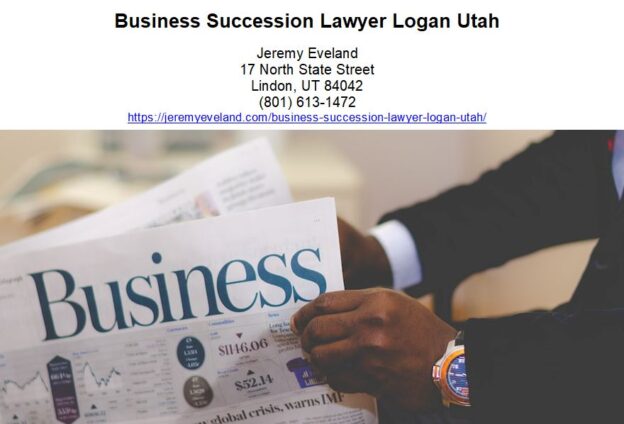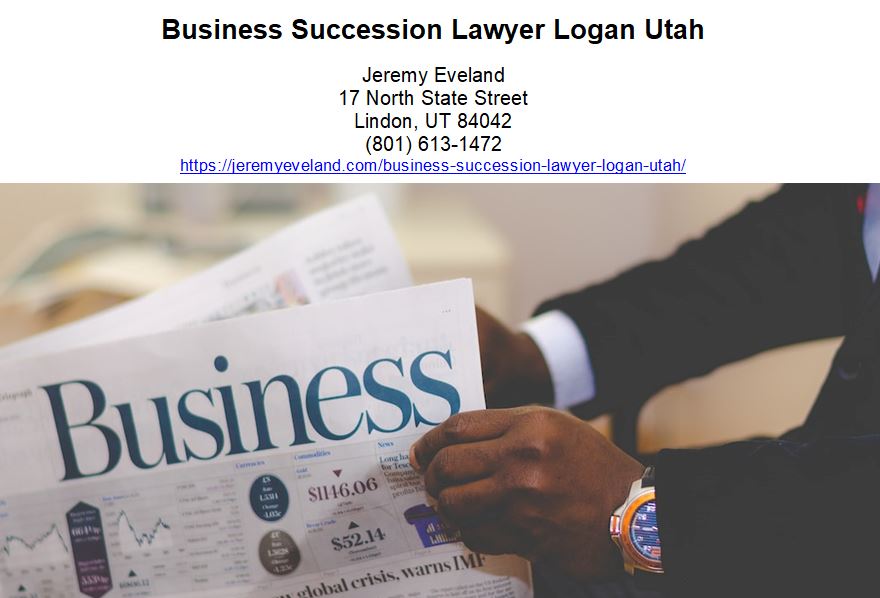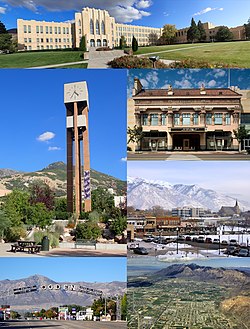-
Attorney at Law
- Introduction
- How to Manage a Successful Management Buyout in Business Succession Planning
- The Role of Workforce Planning in Business Succession Planning
- The Benefits of Professional Development for Potential Successors
- The Role of Tax in Business Succession Planning
- Leadership Roles and Responsibilities in Business Succession Planning
- How to Create a Business Succession Plan for Small Businesses
- The First Step in Business Succession Planning: Identifying Potential Successors
- The Role of Talent Management in Business Succession Planning
- The Benefits of Business Succession Planning for Family Businesses
- Understanding the Basics of Business Succession Planning
“Secure Your Business’s Future with Succession Planning”
Introduction
Business succession planning is an important process for any business owner to consider. It is the process of preparing for the future of the business by ensuring that the right people are in place to take over the business when the current owner or owners retire or otherwise leave the business. It involves planning for the transfer of ownership, management, and control of the business to the next generation of owners. It also involves planning for the financial security of the business and its employees. Succession planning is an important part of any business’s long-term strategy and can help ensure the continuity of the business and its success.
How to Manage a Successful Management Buyout in Business Succession Planning
Business succession planning is an important part of any business, and a management buyout (MBO) is one of the most common strategies used to ensure a successful transition. An MBO is a process in which the current management team of a company purchases the business from its current owners. This type of transaction can be complex and requires careful planning and execution.
The first step in managing a successful MBO is to assess the current state of the business. This includes evaluating the financial health of the company, its competitive position in the market, and the current management team’s capabilities. It is important to understand the strengths and weaknesses of the business in order to determine the best course of action.
Once the assessment is complete, the next step is to develop a plan for the MBO. This plan should include a timeline for the transaction, a budget, and a strategy for financing the purchase. It is important to consider the tax implications of the transaction and to ensure that all legal requirements are met.
The next step is to identify potential buyers and negotiate the terms of the sale. This includes determining the purchase price, the structure of the transaction, and the terms of the financing. It is important to ensure that the terms of the sale are fair and equitable for all parties involved.
Once the terms of the sale have been agreed upon, the next step is to secure financing for the purchase. This can be done through a variety of sources, including banks, venture capitalists, and private investors. It is important to ensure that the financing is sufficient to cover the purchase price and any associated costs.
Finally, the management team must ensure that the transition is successful. This includes developing a plan for the integration of the new owners into the business, training the new owners on the operations of the business, and ensuring that the new owners are familiar with the company’s culture and values.
Managing a successful MBO requires careful planning and execution. By following these steps, businesses can ensure a smooth transition and a successful business succession plan.
The Role of Workforce Planning in Business Succession Planning
Workforce planning is an essential component of business succession planning. It is the process of analyzing an organization’s current and future workforce needs and developing strategies to meet those needs. It involves assessing the current workforce, identifying gaps in skills and competencies, and developing strategies to fill those gaps.
Workforce planning is important for business succession planning because it helps to ensure that the organization has the right people in the right roles at the right time. It helps to identify potential successors and develop strategies to ensure that they are adequately prepared to take on the role. It also helps to identify potential areas of risk and develop strategies to mitigate those risks.
Workforce planning can help to ensure that the organization has the right people in the right roles at the right time by assessing the current workforce and identifying gaps in skills and competencies. This helps to identify potential successors and develop strategies to ensure that they are adequately prepared to take on the role. It also helps to identify potential areas of risk and develop strategies to mitigate those risks.
Workforce planning can also help to ensure that the organization has the right people in the right roles at the right time by assessing the current workforce and identifying gaps in skills and competencies. This helps to identify potential successors and develop strategies to ensure that they are adequately prepared to take on the role. It also helps to identify potential areas of risk and develop strategies to mitigate those risks.
Finally, workforce planning can help to ensure that the organization has the right people in the right roles at the right time by assessing the current workforce and identifying gaps in skills and competencies. This helps to identify potential successors and develop strategies to ensure that they are adequately prepared to take on the role. It also helps to identify potential areas of risk and develop strategies to mitigate those risks.
In conclusion, workforce planning is an essential component of business succession planning. It helps to ensure that the organization has the right people in the right roles at the right time by assessing the current workforce and identifying gaps in skills and competencies. It also helps to identify potential successors and develop strategies to ensure that they are adequately prepared to take on the role. Finally, it helps to identify potential areas of risk and develop strategies to mitigate those risks.
The Benefits of Professional Development for Potential Successors
Professional development is an important part of any career, and it is especially important for potential successors. Professional development can help potential successors gain the skills and knowledge they need to be successful in their future roles. Here are some of the benefits of professional development for potential successors.
First, professional development can help potential successors gain the necessary skills and knowledge to be successful in their future roles. Professional development courses can provide potential successors with the skills and knowledge they need to understand the complexities of their future roles. This can include topics such as leadership, communication, problem-solving, and decision-making. By gaining these skills and knowledge, potential successors can be better prepared to take on their future roles.
Second, professional development can help potential successors build their confidence. Professional development courses can provide potential successors with the opportunity to practice their skills and gain feedback from experienced professionals. This can help potential successors build their confidence and become more comfortable in their future roles.
Third, professional development can help potential successors build their network. Professional development courses can provide potential successors with the opportunity to meet and network with other professionals in their field. This can help potential successors build relationships with other professionals and gain valuable insight into their future roles.
Finally, professional development can help potential successors stay up-to-date on the latest trends and developments in their field. Professional development courses can provide potential successors with the opportunity to learn about the latest trends and developments in their field. This can help potential successors stay ahead of the curve and be better prepared for their future roles.
Overall, professional development can provide potential successors with the skills and knowledge they need to be successful in their future roles. Professional development can also help potential successors build their confidence, network, and stay up-to-date on the latest trends and developments in their field. By taking advantage of professional development opportunities, potential successors can be better prepared for their future roles and have a greater chance of success.
The Role of Tax in Business Succession Planning
Tax plays an important role in business succession planning. Business owners must consider the tax implications of their succession plan in order to ensure that the transition is successful and that the business is able to continue to operate in a profitable manner.
When planning for succession, business owners must consider the tax implications of transferring ownership of the business. Depending on the structure of the business, the transfer of ownership may be subject to capital gains tax, gift tax, or estate tax. Additionally, the transfer of ownership may also be subject to income tax. It is important to understand the tax implications of the transfer of ownership in order to ensure that the business is able to continue to operate in a profitable manner.
Business owners must also consider the tax implications of the succession plan for the business itself. Depending on the structure of the business, the succession plan may be subject to corporate income tax, payroll taxes, or other taxes. It is important to understand the tax implications of the succession plan in order to ensure that the business is able to continue to operate in a profitable manner.
Finally, business owners must consider the tax implications of the succession plan for the individuals involved. Depending on the structure of the succession plan, the individuals involved may be subject to income tax, capital gains tax, or other taxes. It is important to understand the tax implications of the succession plan for the individuals involved in order to ensure that the transition is successful and that the business is able to continue to operate in a profitable manner.
In conclusion, tax plays an important role in business succession planning. Business owners must consider the tax implications of their succession plan in order to ensure that the transition is successful and that the business is able to continue to operate in a profitable manner. Understanding the tax implications of the succession plan is essential for ensuring the success of the business.
Leadership Roles and Responsibilities in Business Succession Planning
Business succession planning is an important process for any business, as it ensures the continuity of the business and its operations in the event of the retirement, death, or disability of the owner or key personnel. Leadership roles and responsibilities are essential for successful business succession planning.
The first leadership role in business succession planning is that of the business owner. The owner is responsible for setting the vision and direction for the business, and for ensuring that the succession plan is in line with that vision. The owner should also be involved in the selection of the successor, and should provide guidance and mentorship to the successor throughout the transition process.
The second leadership role is that of the successor. The successor should be chosen carefully, and should have the necessary skills and experience to take over the business. The successor should also be willing to learn from the owner and other key personnel, and should be able to take on the responsibilities of the business in a timely and efficient manner.
The third leadership role is that of the key personnel. Key personnel should be involved in the succession planning process, as they are the ones who will be responsible for the day-to-day operations of the business. They should be consulted on the selection of the successor, and should be involved in the transition process.
Finally, the fourth leadership role is that of the advisors. Advisors should be consulted throughout the succession planning process, as they can provide valuable advice and guidance on the best way to transition the business. They can also help to ensure that the succession plan is in line with the owner’s vision and goals.
Additionally, here are the use cases, functions, and history of business succession planning?
Use Cases
Business succession planning is an important tool for business owners who are looking to transition their business to the next generation. It provides an organized and structured plan for how a business should be handled after the current owner passes away or retires. This type of planning can help ensure the continuity of the business, help preserve its value and protect the interests of key stakeholders.
Functions
The main purpose of business succession planning is to ensure that the business can continue to operate smoothly after the current owner retires or passes away. This includes planning for the transition of ownership, transferring assets and liabilities, updating legal documents, and setting up an estate plan. The plan should also include strategies to ensure the continuity of the business and its profitability.
History
The concept of business succession planning has been around for centuries. Historically, it was used by large families to ensure that the wealth and power of the family was maintained and passed down through generations. In modern times, it is used by business owners of all sizes to ensure that their businesses can continue to run smoothly and remain profitable after they have left.
Business succession planning is an important process for any business, and leadership roles and responsibilities are essential for successful business succession planning. The owner, successor, key personnel, and advisors all have important roles to play in the process, and should be consulted throughout the process.
How to Create a Business Succession Plan for Small Businesses
Creating a business succession plan is an important step for any small business owner. A succession plan ensures that the business will continue to operate in the event of the owner’s death, disability, or retirement. It also helps to ensure that the business’s assets are distributed in accordance with the owner’s wishes.
The first step in creating a business succession plan is to determine who will take over the business in the event of the owner’s death, disability, or retirement. This could be a family member, a trusted employee, or an outside investor. Once the successor has been identified, the owner should create a written agreement that outlines the terms of the succession. This agreement should include the successor’s responsibilities, the timeline for the transition, and the compensation the successor will receive.
The next step is to create a plan for transferring ownership of the business. This could involve transferring the business to the successor, selling the business to an outside investor, or liquidating the business’s assets. The owner should also consider creating a trust or other legal entity to manage the business’s assets after the owner’s death, disability, or retirement.
The owner should also create a plan for transferring the business’s debts and liabilities. This could involve transferring the debts to the successor, selling the debts to an outside investor, or negotiating with creditors to reduce or eliminate the debts.
Finally, the owner should create a plan for transferring the business’s assets. This could involve transferring the assets to the successor, selling the assets to an outside investor, or liquidating the assets.
Creating a business succession plan is an important step for any small business owner. It helps to ensure that the business will continue to operate in the event of the owner’s death, disability, or retirement, and that the business’s assets are distributed in accordance with the owner’s wishes. By taking the time to create a comprehensive succession plan, the owner can ensure that the business will continue to thrive even after they are gone.
The First Step in Business Succession Planning: Identifying Potential Successors
Succession planning is an important part of any business, as it ensures that the business will continue to operate and grow even after the current owners and/or managers have retired or left the company. The first step in business succession planning is to identify potential successors. This involves assessing the skills, experience, and qualifications of current employees, as well as considering external candidates who may be better suited to the role.
When identifying potential successors, it is important to consider the long-term goals of the business and the skills and experience that will be needed to achieve them. It is also important to consider the individual’s ability to work with the current team and to lead the business in the future.
When assessing potential successors, it is important to consider their qualifications, experience, and skills. It is also important to consider their ability to work with the current team and to lead the business in the future. It is also important to consider their commitment to the business and their willingness to learn and grow with the company.
Once potential successors have been identified, it is important to create a succession plan that outlines the steps that will be taken to ensure a smooth transition. This plan should include a timeline for the transition, a plan for training and development, and a plan for communication and support.
Succession planning is an important part of any business, and the first step is to identify potential successors. By assessing the skills, experience, and qualifications of current employees and considering external candidates, businesses can ensure that they have the right people in place to lead the business into the future.
The Role of Talent Management in Business Succession Planning
Business succession planning is an important part of any organization’s long-term strategy. It involves the identification and development of key personnel who can take over the leadership of the organization when the current leadership retires or leaves. Talent management is an essential component of successful business succession planning.
Talent management is the process of identifying, developing, and retaining key personnel who have the potential to become future leaders. It involves assessing the skills and abilities of current and potential employees, and then providing them with the necessary training and development opportunities to help them reach their full potential. Talent management also involves creating a culture of learning and development, and providing incentives to motivate employees to reach their goals.
Talent management is essential for successful business succession planning because it helps to ensure that the organization has the right people in place to take over when the current leadership retires or leaves. It also helps to ensure that the organization has a pipeline of potential leaders who can step in and fill any gaps in leadership.
Talent management also helps to ensure that the organization has the right people in place to take over when the current leadership retires or leaves. It helps to identify and develop the skills and abilities of current and potential employees, and provides them with the necessary training and development opportunities to help them reach their full potential. This helps to ensure that the organization has the right people in place to take over when the current leadership retires or leaves.
Finally, talent management helps to create a culture of learning and development, and provides incentives to motivate employees to reach their goals. This helps to ensure that the organization has the right people in place to take over when the current leadership retires or leaves.
In conclusion, talent management is an essential component of successful business succession planning. It helps to ensure that the organization has the right people in place to take over when the current leadership retires or leaves, and provides them with the necessary training and development opportunities to help them reach their full potential. Talent management also helps to create a culture of learning and development, and provides incentives to motivate employees to reach their goals.
The Benefits of Business Succession Planning for Family Businesses
Business succession planning is an important process for family businesses, as it helps to ensure the continuity of the business and the financial security of the family. It is a process that involves the transfer of ownership and management of the business from one generation to the next.
Business succession planning helps to ensure that the family business is passed on to the next generation in a way that is beneficial to all involved. It allows the current owners to plan for the future of the business and to ensure that their legacy is preserved. It also helps to ensure that the business is passed on in a way that is financially beneficial to the family.
Business succession planning helps to ensure that the family business is passed on in a way that is beneficial to the next generation. It allows the current owners to plan for the future of the business and to ensure that their legacy is preserved. It also helps to ensure that the business is passed on in a way that is financially beneficial to the family.
Business succession planning also helps to ensure that the family business is passed on in a way that is beneficial to the community. It allows the current owners to plan for the future of the business and to ensure that their legacy is preserved. It also helps to ensure that the business is passed on in a way that is beneficial to the local economy.
Business succession planning also helps to ensure that the family business is passed on in a way that is beneficial to the environment. It allows the current owners to plan for the future of the business and to ensure that their legacy is preserved. It also helps to ensure that the business is passed on in a way that is beneficial to the environment.
Business succession planning is an important process for family businesses, as it helps to ensure the continuity of the business and the financial security of the family. It is a process that involves the transfer of ownership and management of the business from one generation to the next. By taking the time to plan for the future of the business, family businesses can ensure that their legacy is preserved and that their business is passed on in a way that is beneficial to all involved.
Understanding the Basics of Business Succession Planning
Business succession planning is an important process for any business owner. It is the process of preparing for the transfer of ownership and management of a business from one generation to the next. It is a complex process that requires careful consideration and planning.
Succession planning is important for any business, regardless of size. It ensures that the business will continue to operate and grow in the future. It also helps to protect the business from potential legal and financial risks.
The first step in business succession planning is to identify the current and future owners of the business. This includes determining who will be responsible for the day-to-day operations of the business, as well as who will be responsible for making long-term decisions. It is important to consider the skills and experience of each potential owner, as well as their commitment to the business.
The next step is to develop a plan for transferring ownership and management of the business. This includes determining how ownership will be transferred, such as through a sale, gift, or inheritance. It also includes determining how the business will be managed in the future, such as through a partnership, corporation, or limited liability company.
The third step is to create a succession plan. This includes developing a timeline for the transition, as well as outlining the roles and responsibilities of each owner. It is important to consider the tax implications of the transition, as well as any legal or financial risks.
Finally, it is important to review and update the succession plan on a regular basis. This ensures that the plan remains up-to-date and reflects any changes in the business or the owners.
Business succession planning is an important process for any business owner. It helps to ensure that the business will continue to operate and grow in the future. It also helps to protect the business from potential legal and financial risks. By taking the time to develop a comprehensive succession plan, business owners can ensure that their business will remain successful for years to come.
Areas We Serve
We serve individuals and businesses in the following locations:
Salt Lake City Utah
West Valley City Utah
Provo Utah
West Jordan Utah
Orem Utah
Sandy Utah
Ogden Utah
St. George Utah
Layton Utah
South Jordan Utah
Lehi Utah
Millcreek Utah
Taylorsville Utah
Logan Utah
Murray Utah
Draper Utah
Bountiful Utah
Riverton Utah
Herriman Utah
Spanish Fork Utah
Roy Utah
Pleasant Grove Utah
Kearns Utah
Tooele Utah
Cottonwood Heights Utah
Midvale Utah
Springville Utah
Eagle Mountain Utah
Cedar City Utah
Kaysville Utah
Clearfield Utah
Holladay Utah
American Fork Utah
Syracuse Utah
Saratoga Springs Utah
Magna Utah
Washington Utah
South Salt Lake Utah
Farmington Utah
Clinton Utah
North Salt Lake Utah
Payson Utah
North Ogden Utah
Brigham City Utah
Highland Utah
Centerville Utah
Hurricane Utah
South Ogden Utah
Heber Utah
West Haven Utah
Bluffdale Utah
Santaquin Utah
Smithfield Utah
Woods Cross Utah
Grantsville Utah
Lindon Utah
North Logan Utah
West Point Utah
Vernal Utah
Alpine Utah
Cedar Hills Utah
Pleasant View Utah
Mapleton Utah
Stansbury Par Utah
Washington Terrace Utah
Riverdale Utah
Hooper Utah
Tremonton Utah
Ivins Utah
Park City Utah
Price Utah
Hyrum Utah
Summit Park Utah
Salem Utah
Richfield Utah
Santa Clara Utah
Providence Utah
South Weber Utah
Vineyard Utah
Ephraim Utah
Roosevelt Utah
Farr West Utah
Plain City Utah
Nibley Utah
Enoch Utah
Harrisville Utah
Snyderville Utah
Fruit Heights Utah
Nephi Utah
White City Utah
West Bountiful Utah
Sunset Utah
Moab Utah
Midway Utah
Perry Utah
Kanab Utah
Hyde Park Utah
Silver Summit Utah
La Verkin Utah
Morgan Utah
Business Succession Planning Consultation
When you need help with Business Succession Planning call Jeremy D. Eveland, MBA, JD (801) 613-1472 for a consultation.
Jeremy Eveland
17 North State Street
Lindon UT 84042
(801) 613-1472
Related Posts
Business Strategy and Consulting
Business Succession Lawyer Roy Utah
Business Lawyer St George Utah
Estate Planning Lawyer Ogden Utah
Business Succession Lawyer Pleasant Grove Utah
Market Analysis For Business Antitrust Merger
Are Legal Expenses for Estate Planning Deductible?
Common Legal Issues That Should Involve A Business Lawyer
Corporate Attorney West Valley City Utah
What Does A Corporate Counsel Do?
Can Corporate Counsel Represent A Corporation In Court?
Corporate Attorney Salt Lake City Utah
































